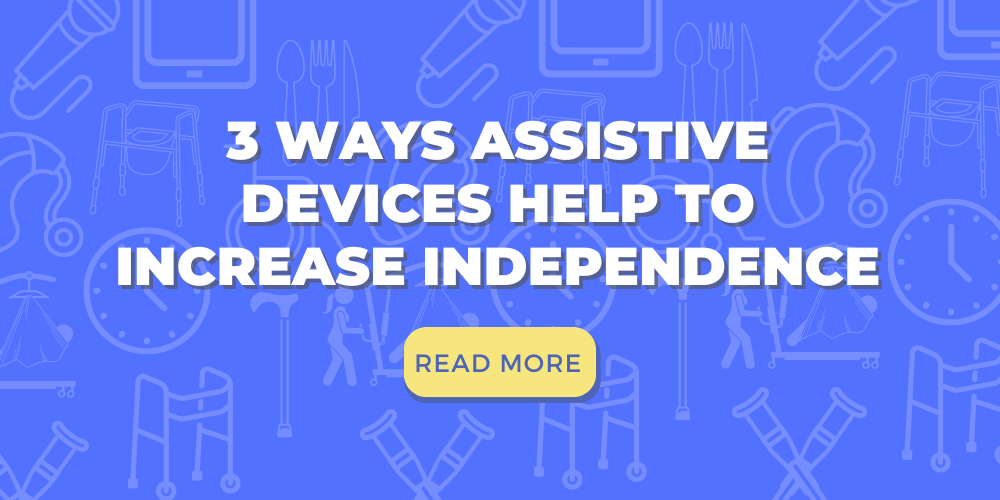Articles
3 Ways Assistive Devices Help to Increase Independence

Change is a part of life and as human beings grow and evolve, so do their needs. In some seasons of life people benefit from the use of assistive devices. An assistive device is designed to assist a person in completing a particular task. These devices range from tools like hearing aids to power wheelchairs to sophisticated systems like eye-tracking software. Assistive devices empower users by enhancing mobility, communication, learning, and overall independence.
1. Enhancing Mobility and Independence
For individuals with physical disabilities, assistive devices such as wheelchairs and mobility scooters can be life-changing. These devices provide the freedom to move, allowing users to perform daily activities that might otherwise be challenging or impossible. One of our partners, Renew Mobility, helps to connect people in need with gently used mobility equipment from their donation closet. They provide training on how to use the equipment, and are the only non-profit that offers power wheelchairs in the entire state of Michigan.
Beyond physical mobility, assistive devices also contribute to a greater sense of independence. Devices like adaptive utensils, dressing aids, and voice-activated home systems allow individuals to perform tasks without relying on others. Disability Advocates, another partner, utilizes occupational therapists to help people find the right solutions for their needs. This independence is not just about convenience; it’s about dignity. The ability to take care of oneself is a cornerstone of personal autonomy, and assistive devices make this possible.
2. Improving Communication
Communication is another area where assistive devices have a profound impact. For individuals with speech or hearing impairments, devices like hearing aids and speech-generating devices (SGDs) open up worlds of possibility. Our partner, Deaf and Hard of Hearing Services, specializes in this area. Hearing aids help individuals with hearing loss connect with others, participate in conversations, and enjoy sounds that many take for granted, like music or the laughter of a loved one. SGDs, on the other hand, give a voice to those who are unable to speak, allowing them to express their thoughts, needs, and emotions.
Advancements in technology have also led to the development of apps and software that facilitate communication in real-time. For instance, text-to-speech and speech-to-text applications enable individuals with vision, speech or hearing impairments to communicate more effectively in various settings. The Association for the Blind & Visually Impaired knows the benefits of these tools first hand. These tools not only improve day-to-day interactions but also open up educational and professional opportunities that might otherwise be inaccessible.
3. Expanding Access and Participation
Ultimately, assistive devices empower individuals with disabilities to participate more fully in society. Whether it’s through improved mobility, enhanced communication, or greater access to the community, these tools break down barriers and open doors to opportunities that were once out of reach. They enable users to live more independently, pursue their goals, and contribute to their communities in meaningful ways.
Assistive devices are not just tools; they are lifelines that provide individuals with disabilities the means to lead richer, more fulfilling lives. As technology continues to advance, the potential for these devices to further enhance the lives of people with disabilities is boundless. The benefits of assistive devices are clear—they are essential in creating a more inclusive, accessible, and equitable world.
Tagged:

